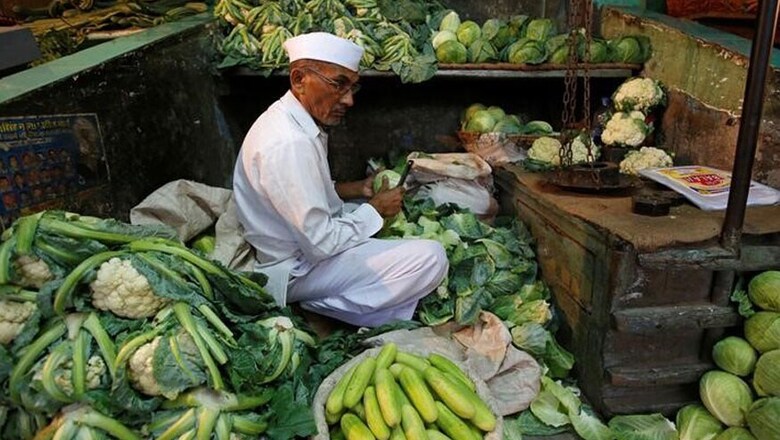
views
Mumbai: India's benchmark 10-year bond fell to its lowest level in more than 16 months on Wednesday, while shares weakened after unexpectedly high November consumer inflation created the prospect the Reserve Bank of India (RBI) could raise interest rates sooner than expected.
The benchmark 10-year bond yield was up 3 basis points at 7.22 percent by 0443 GMT after rising to as high as 7.25 percent, the highest since July 2016.
The broader NSE Nifty was down 0.2 percent.
The partially convertible rupee was trading at 64.44 per dollar versus its previous close of 64.40. In India, the currency follows foreign-exchange flows and shares, rather than track interest rate changes.
The market reaction came after data late on Tuesday showed annual inflation accelerating to a 15-month high of 4.88 percent in November, driven by a surge in food prices.
That was sharply above the central bank's 4 percent medium-term inflation target and its projection that inflation would accelerate to 4.3 to 4.7 percent in the six months to March. A Reuters poll had forecast inflation of 4.2 percent in November.
Worryingly, core inflation last month also accelerated, hitting 4.9 percent from an average of 4.3 percent over the prior six months, according to DBS Bank estimates.
Analysts said they still expect the RBI to hold its repo rate at a more than 7-year low of 6.00 percent after last cutting it in August, but warned that the odds of a hike had risen. The central bank could also shift to a tightening bias from its current neutral stance, they added.
The RBI's monetary policy committee (MPC) holds its next policy meeting in early February.
"We now see 30 percent chance of a precautionary rate hike in the February policy itself, with the MPC facing an acute tradeoff between sluggish growth and rising inflation for the first time in its short existence," Citigroup said in a note to clients on Wednesday.
Raising interest rates won't be an easy call for the RBI. Although annual economic growth recovered to 6.3 percent in July-September, halting a five-quarter slide, that is still below the 8 percent India needs to create jobs.
Data on Tuesday also showed that annual industrial output grew a lower-than-expected 2.2 percent in October, falling short of a forecast of 3.0 percent in a Reuters poll of economists.



















Comments
0 comment